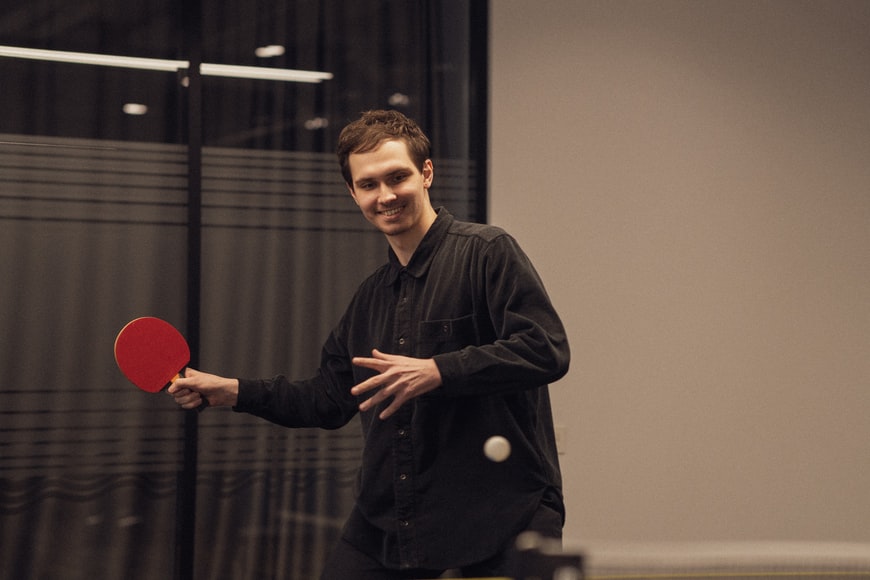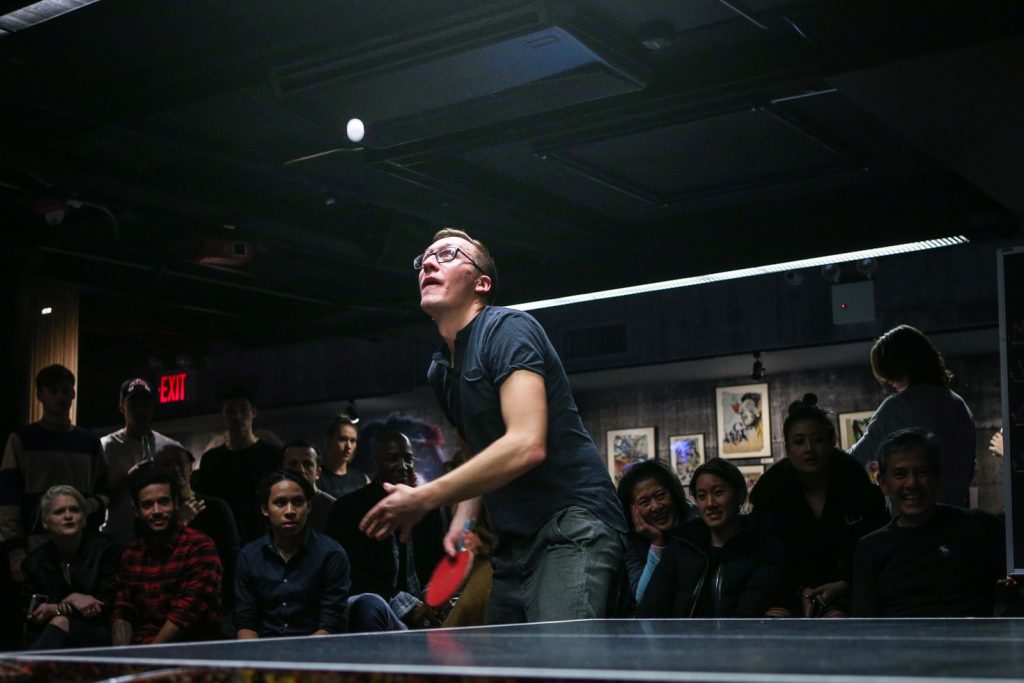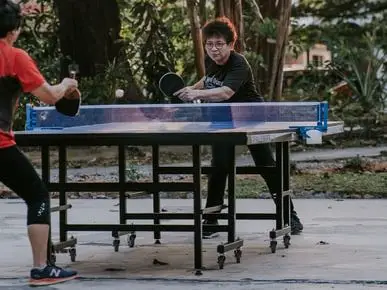Ping pong, also known as table tennis, is a popular sport enjoyed by people of all ages with different rules. While the basic rules of the game are simple, there are some nuances that can make the game more complex.
In this article, we will outline the Ping Pong Rules 21 Points variant of the game. This is a more competitive variation of ping pong that is played by two players. If you are interested in learning how to play this variant, keep reading!
Why should you know the table tennis 21 points rule?

The 21 points rule is an important factor to consider when playing table tennis as it can determine the outcome of the match.
Knowing when a player has reached 21 points and therefore won the game can be crucial in ensuring victory. Being aware of the rules can give you an advantage over your opponent and help to improve your gameplay.
So, why not learn more about the 21 points rule and put your knowledge into practice on the table tennis table? You may be surprised at just how successful you can be!
Did you know that the 21 points rule also applies to doubles play? In this case, the game is won when one team reaches 21 points by the international court.
Again, should both teams achieve the same score, the game is said to be ‘tied’. A set is won by the first team to win seven games with a margin of two games.
If the score in any game reaches 10-10, then that particular game becomes the final point of the set.
Knowing these rules is essential if you want to compete in doubles table tennis matches.
Know The Ping Pong Rules 21 Points Properly
In Ping Pong Rules 21 Points, each player starts with 21 points. The goal of the game is to score more points than your opponent. The first player to reach 0 points loses the game.
The basic gameplay of Ping Pong Rules 21 Points is the same as regular ping pong. When a player serves, they must bounce the ball on their side before hitting it with their paddle and sending it over to the other person’s side of the table.
The service can be performed from either right or left; however, players must always return serve from the opposite side of the table.

Ping Pong Rules 21 Points includes a number of unique rules and variations on basic gameplay:
- When a player loses their service, they must fulfill one of the following requirements before they are allowed to serve again: Win two consecutive points
- The player can choose to skip over an opponent’s turn by immediately hitting the ball across the net.
- The player can hit the ball into their opponent’s court in such a way that the ball bounces twice on their opponent’s side of the table.
- If a player hits the ball out of bounds, they lose a point.
- If a player drops or mishandles the ball, they lose a point.
- If a player hits the ball into their opponent’s body or clothing, they lose a point.
- If a player double hits the ball, they lose a point.
- If a player misses the ball, they lose a point.
These are just some of the rules that govern Ping Pong Rules 21 Points. As with any sport, it is important to understand the rules before playing.
As you become more familiar with the game, you can experiment with different variations to make the experience more exciting.
Does table tennis play 21 points?

This is a question that has vexed table tennis players for years. And the answer, like most things in life, is not black and white; it’s more of an alluring shade of gray.
It also depends on how you define “play” and “21 points”.
For instance, if what you mean by 21 points is scoring 21 consecutive points without receiving any point back to tie or win your game, then the answer is no.
That would be called a rally in table tennis jargon which can have many different lengths including 3 points to 15 points in length with some variations possible too.
But what about when people say they are playing 21 tables? The short answer here is yes – but there are caveats involved as well.
The long answer is that the “table” refers to a change of service between players.
This means if you are playing with someone, and your turn to serve comes up, you “change tables” by putting your paddle down on their side of the table after they have put their paddle down on my side when it’s my turn to serve.
Now, if you are playing against a machine or another person and you reach 21 points, the game is over; there is no continuation to the next point.
Why was the scoring in Table Tennis changed from a 21 to 11 point game?

The 11 point system is more advantageous to the player who is leading in a set. If the score reaches 10-10, the player who is leading only needs to win one more point to take the set.
Whereas, under the old 21 point system, the player would have needed to win two more points. This means that there is now a greater risk for the player who is trailing in a set, as they now need to win two consecutive points rather than just one in order to take the set.
The new scoring system also makes it less likely for matches to reach a deciding game, as the first player to reach 11 points will win the set.
This makes the game more competitive and exciting to watch.
The new scoring system was introduced in 2006 in order to make table tennis more competitive and exciting to watch.
It is now more advantageous for the player who is leading in a set, making it less likely for matches to reach a deciding game.
The new scoring system has made table tennis more competitive and exciting to watch and is now the standard scoring system used worldwide.
What year did the game change from 21 to 11 points?
The ping pong game changed from 21 to 11 points in 1949. This decision was made by the International Table Tennis Federation (ITTF) in order to standardize the rules for the sport.
The ITTF reasoned that 11 points offered a reasonable duration for a competitive match, was an easily calculable number and could be completed in a reasonable time frame without excessive breaks.
The rule change was immediately adopted by the United States, which was dominant in international table tennis at the time. The change swiftly gained popularity elsewhere as well.
In 1891, British author W. Gresham Cooke suggested 21 points be required for victory.
However, Americans Bernard and William Whitman led a successful campaign for 16 points to prevail.
Its popularity in the United States led the Amateur Athletic Union (AAU) to adopt 3/out-of-5 after 1914, though its rules were changed back 21 point matches in 1921 by 1934 as part of an effort to accommodate those with limited playing time outside business hours.
In 1949, the International Table Tennis Federation (ITTF) convened to standardize rules for the sport and decided in favor of 11 points.
The ITTF reasoned that 11 points offered a reasonable duration for a competitive match, was an easily calculable number and could be completed in a reasonable time frame without excessive breaks.
The rule change was immediately adopted by the United States, which was dominant in international table tennis at the time. The change swiftly gained popularity elsewhere as well.
Are there different rules for Amateurs and Professionals in ping pong?

There are different rules for Amateurs and Professionals in ping pong. Amateur players are not allowed to hit the ball with their palms.
Professional players, on the other hand, can hit the ball with their palms.
However, both amateurs and professionals are allowed to use different parts of the body.
The table tennis rules for professional players allow them to use any part of their bodies except for the palms and must be able to maintain a steady motion during play.
As such, they can hit the ball with their feet and heads and even lose points if it disrupts the other player’s game.
Amateur players, however, are only allowed to use their hands and arms. They are also not allowed to hit the ball twice in a row.
The rules for professional ping pong players are designed to create a more exciting and challenging game. However, these rules can also be more difficult to follow.
Official table tennis rules

- Table tennis is a table game that was invented in 1895.
- The International Table Tennis Federation (ITTF) is the governing body for international competitions.
- ITTF World Championships have been held every year since 1926.
- There are four tables, also known as singles, and two tables also called doubles.
- In singles, each player has one table.
- In doubles, each player has two tables and partners face each other across the net.
- A coin is tossed to determine who serves first.
- The server stands behind the baseline on their side of the table and the server’s partner stands in the diagonally opposite corner.
- The ball is served from behind the baseline and between the center service line and net.
- In doubles, either server’s partner or a ball from another court is served in rotation.
- The ball must hit the playing surface of the opponents’ side once before going out.
- A ball landing in between serves counts in favor of opponents except when it goes in after hitting a post.
- The ball is allowed to bounce once on the server’s side before it must touch the opponent’s side.
- If a serve hits net or post, it does not count and is replayed with no advantage.
- A rally ends when the ball touches anything other than the playing surface after being struck by an opponent.
- Points are earned when opponents fail to return the ball before it bounces twice or when they return into net or post.
- When one player reaches 11 points in singles or 21 in doubles, both teams change sides regardless of who won the point.
- Matches are played best 3 out of 5 games but each game counts as 1 point while serving order stays constant for all 3 games (ie. if game 1 was won by Player A’s team, then serve an order in game 2 is reversed).
- The player or the doubles pair who first scores 11 points wins the set while a player must win by at least 2 clear points (ie. 10-8, 10-9, etc. are not enough).
- For an 8 or 12 point tiebreak, if both teams score 5 points each before reaching 10, another game will be played where the first point is sudden death and takes only 1 point to win.
- Matches are usually played in best of 5 games but championship matches can last up to 7 games.
Read Here: 7 Official Ping Pong Serving Rules How to Serve Legally
Is there a time limit in ping pong?
Yes, a rule in ping pong is that it must be played in a timely fashion. For example, if you are waiting for your turn to hit the ball with the bat (your “service”), then you should not walk about or talk with others after the rally has begun.
If someone does this, they have committed an infraction known as “coaching”. But what would happen if their opponent does so? That would be called a time violation. There will also likely be some sort of penalty imposed on them too.
Summary
Ping-pong has been around for centuries, but it wasn’t until the late 1800s that a set of rules was established.
Ping-pong rules are easy to follow and understand even if you’re playing with someone who doesn’t know the ins and outs of the sport.
I hope this article has helped you a lot to know the ping pong rules 21 points. If you want to learn more about how this game works or just like reading about new things, then check out our blog post!
Read More Here: What is ping pong?

Hi, My name is Benjamin Fink and I am the author of the ping pong reviewed blog. I am a sports person learning and sharing my knowledge with others about ping pong and other sports.
I have been playing ping pong for the last 17 years and teaching people about the game and writing new things about the game through this blog When finding something new. I have participated in serious ping pong tournaments in my country.
